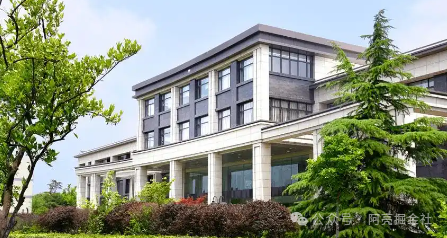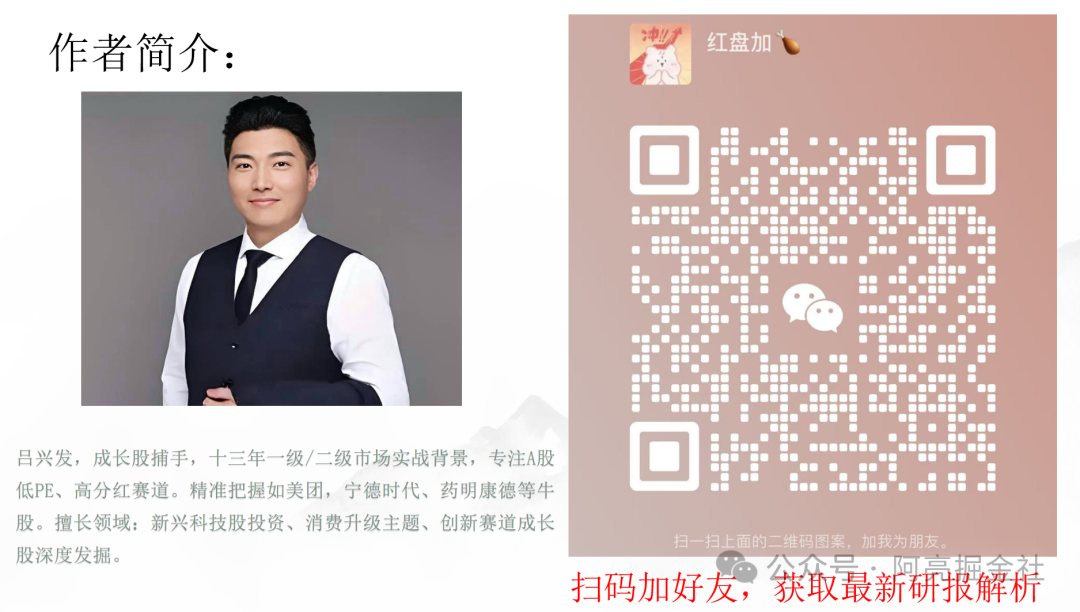In the wave of transformation in the new energy vehicle industry, traditional automotive interior companies are facing the impact of “de-leatherization.” Mingxin Xuteng, as a leading domestic high-end automotive leather manufacturer, is experiencing revenue growth while falling into a net profit loss dilemma.
However, the company is attempting to open a second growth curve by diversifying into flexible sensors. After experiencing a rollercoaster ride in stock prices, can it achieve a revaluation at the intersection of new materials and smart hardware?

Company Fundamentals Analysis: The Dilemma of Revenue Growth Without Profit
As an invisible champion in the domestic automotive leather sector, Mingxin Xuteng demonstrates strong customer loyalty in its traditional business. Its core clients include major automotive manufacturers such as FAW-Volkswagen, Audi, and BYD. By 2024, the revenue share from new energy business is expected to rise to over 30%, and the company is entering the North American supply chain through its Mexican factory, targeting Tesla and General Motors.
The company’s product matrix covers various categories including genuine leather, microfiber leather, and PU/PVC, with its all-water-based microfiber technology being the only mass-produced version in China, receiving EU environmental certification and achieving a gross margin of over 35%.
However, financial data reveals an awkward situation of “increasing revenue without increasing profit.” In 2024, revenue is expected to grow by 30.2% year-on-year to 1.179 billion yuan, but the net profit attributable to shareholders is projected to be a loss of 172 million yuan, with the gross margin declining by 5.56 percentage points to 20.5%.
This is mainly due to rising raw material (cowhide) prices, increased depreciation costs at the Mexican factory, and price pressure from new energy clients. Notably, the company’s accounts receivable reached 312 million yuan (26.5% of revenue), and its inventory turnover rate of 0.27 times is below the industry average, indicating significant cash flow pressure.
| Indicator | 2024 | 2023 | Year-on-Year Change |
|---|---|---|---|
| Operating Revenue | 1.179 billion yuan | 906 million yuan | +30.2% |
| Net Profit Attributable to Shareholders | -172 million yuan | 55 million yuan | -412.5% |
| Gross Margin | 20.5% | 26.06% | -5.56pct |
| New Energy Revenue Share | 30%+ | 20%+ | +10pct |
| R&D Expenses | 103 million yuan | 88 million yuan | +16.5% |
Despite short-term profit pressure, the company is seeking breakthroughs through capacity expansion and technological upgrades. The Mexican factory is expected to start production in 2024, contributing over 200 million yuan in revenue by 2025, driving over 50% growth in its main business; the flexible sensor business is collaborating with the Wanjie M9, with automotive-grade samples planned for release in 2025, and the long-term value in robotic scenarios is considerable.
Technical Analysis: Volatile Patterns Under Financial Speculation
From the stock price trend, Mingxin Xuteng recently exhibited typical characteristics of “speculative capital dominance + institutional divergence.” After breaking through the key resistance level of 17.78 yuan on May 6, the stock price rapidly surged to a high of 22.05 yuan within five trading days, but subsequently fell back to around 19 yuan due to institutional sell-offs.
Technical indicators show that the MACD formed a death cross on May 8, and the RSI fell from the overbought zone (>70) to around 50, indicating short-term correction pressure.
| Time Period | Price Change | Volume Change | Key Events |
|---|---|---|---|
| Last 1 Month | +26.84% | Volume Breakthrough | Increased Orders for Mexican Factory |
| Last 5 Trading Days | -14.06% | Volume Adjustment | Institutional Net Sell of 13.58 million yuan |
| Year-to-Date | +40.89% | Range Volatility | Speculation on Flexible Sensor Concept |
Notably, the leaderboard on May 8 showed that speculative capital from Huatai Securities Headquarters and CITIC Shanghai Branch was dominant in buying, while institutional positions showed significant net selling, reflecting an intensifying divergence between bulls and bears. The current stock price has formed a dense trading area in the range of 18-20 yuan; if trading volume cannot continue to expand, the volatile pattern may persist.
Industry and Macro Analysis: Opportunities and Challenges Under New Energy Transformation
The automotive interior industry is undergoing structural transformation. On one hand, the increasing penetration rate of new energy vehicles (expected to exceed 40% by 2025) is driving demand for environmentally friendly materials. The company’s water-based microfiber leather aligns with the green manufacturing requirements of “Made in China 2025” and has received over 20 million yuan in government subsidies.
On the other hand, the trend of “de-leatherization” is impacting traditional businesses, with the proportion of genuine leather seat models expected to drop to 40% in 2024, increasing the risk of price wars in microfiber leather.
In terms of global competition, Mingxin Xuteng faces pressure from international giants such as Toray from Japan and Alcantara from Italy in the microfiber leather sector, with a domestic production rate of less than 20%. However, the company is rapidly capturing market share due to its cost-performance advantage. On the policy front, a new round of “automobile going to the countryside” is stimulating demand for mid-to-high-end models, and the company’s market share of genuine leather steering wheels has surged to the forefront, likely benefiting from consumption upgrades.
| Industry Variables | Current Status and Trends | Impact on Company |
|---|---|---|
| New Energy Penetration Rate | Expected to exceed 40% by 2025 | Growth in demand for environmentally friendly materials |
| Policy Support | Subsidies for water-based materials, automobile going to the countryside | Expectations for gross margin recovery |
| Competitive Landscape | Domestic production rate below 20%, concentration of leading enterprises | Broad space for domestic substitution |
| Risk of Technological Substitution | Accelerated R&D of bio-based synthetic leather | Challenges for traditional leather business |
Future Stock Price Prediction: The Game Between Core Business Support and Sensor Options
Based on a multi-dimensional analysis, Mingxin Xuteng’s stock price may maintain volatility in the short term, while in the medium term, two core variables need to be observed: First, the progress of capacity release at the Mexican factory, and second, the commercialization progress of flexible sensors.
Short Term (1-3 Months): The stock price is likely to fluctuate in the range of 18-20 yuan. After the technical overbought signal is released, if the trading volume shrinks to below an average of 30,000 hands per day, it may test the support level of 17 yuan; if North American client orders materialize, it could stimulate a rebound to the resistance level of 22 yuan.
Medium Term (3-6 Months): In a neutral scenario, assuming the net profit of the main business recovers to 100 million yuan (corresponding to a PE of 20) + sensor business revenue of 100 million yuan (50 times PS), the target market value would be 7 billion yuan (current price about 3.1 billion yuan, with potential for doubling). In an optimistic scenario, if the robotic tactile module is mass-produced and passes Tesla certification, the market value could exceed 10 billion yuan.
Risk Warning: Caution is needed regarding delays in capacity ramp-up at the Mexican factory, longer-than-expected certification cycles for automotive-grade flexible sensors, and competitive pressure from overseas giants (such as FlexEnable and BOE) in the sensor field.
| Scenario Assumptions | Core Catalysts | Target Market Value | Risk Factors |
|---|---|---|---|
| Neutral Scenario | Capacity release at the Mexican factory | 7 billion yuan | Rising raw material costs, orders falling short of expectations |
| Optimistic Scenario | Mass production of sensors + breakthroughs in North America | 10 billion yuan | Risks in technology commercialization |
| Pessimistic Scenario | Continued decline in gross margin of the main business | 2.5 billion yuan | Intensifying industry price wars |
Comprehensive Assessment: Traditional Business Foundation, Sensors Open Up Imagination
Mainline Logic: Mingxin Xuteng is at a critical turning point of “traditional business recovery” and “emerging business breakthroughs.” The genuine leather business is gradually stopping the bleeding through customer structure optimization (increased share of new energy) and cost control (scaling up the Mexican factory), while the flexible sensor business is leveraging material technology accumulation to enter the smart cockpit and robotics sectors, forming a “automotive + robotics” dual-drive model.
Risks and Opportunities:
- Opportunities: Domestic substitution of water-based microfiber leather, North American orders from the Mexican factory, cross-industry flexible sensor technology.
- Risks: High accounts receivable, tight cash flow, risk of technological substitution.
Risk Warning Signals:
- If the gross margin does not rebound to over 25% by Q2 2025, caution is needed regarding the main business recovery falling short of expectations;
- If the sensor sample testing is delayed until the end of 2025, it may weaken market confidence in the second growth curve.
In the wave of intelligence and lightweighting in the automotive industry, Mingxin Xuteng’s transformation journey is filled with challenges and opportunities. The “stopping the bleeding” of traditional business requires time, while the “blood-generating” capability of sensors has yet to be validated.
Investors need to adopt a dialectical thinking of “looking at risks through the rearview mirror and opportunities through the telescope,” seeking investment anchors in the balance of value and growth. Remember, in the capital market, there are no certain opportunities, only probabilistic games..

Disclaimer: This article is a personal diary and does not constitute investment advice. All views expressed in the text represent personal positions and do not have any guiding effect.